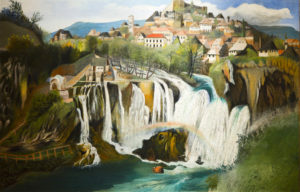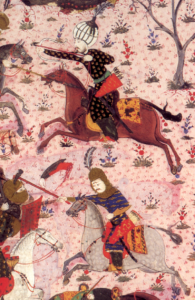
Jajca

Jajca (Jajce, meaning “egg”) is a city in Bosnia-Hercegovina and it is famous for its huge castle and for the Hungarians, for its siege of King Matthias Corvinus. Its huge castle is situated near the great waterfalls which were painted by Csontváry Kosztka Tivadar.
Jajca was first built in the 14th century and served as the capital of the independent Kingdom of Bosnia during its time. The town has gates as fortifications, as well as a castle with walls that lead to the various gates around the town. The first references to the name of Jajca in written sources are from the year 1396, but the fortress had already existed by then.

It was Lord Tallóci Matkó (Matko Talovac) who took it in 1434 for the Hungarian King Zsigmond but it returned to King Stjepan Tomasevic (István Tamás) of Bosnia before 1449.

Jajca was the residence of the last Bosnian king Stjepan Tomasevic; the Ottomans besieged the town and executed him in 1463 but King Matthias Corvinus took it back on 25 December of the same year, during his Bosnian campaign.
The town belonged to the Kingdom of Hungary between 1464 and 1527 and it was the center of the Dukedom (Bánság or Banovina) of Jajca. The Ottomans besieged it again in 1464 but they were defeated by King Matthias Corvinus. In 1499, Korvin János (John Corvinus), the illegitimate son of King Matthias Corvinus, was appointed Ban of Croatia. Corvinus was an experienced military leader who defeated the German mercenaries near Zagreb in 1491 and the Ottomans near Šibenik in 1499.

Battle of Jajce, early November 1501





As the castle was a key strategic point of the southern line of the Hungarian Borderland chain at that time, the Ottomans wanted to get it by all means. Due to its strategic importance, Jajce would be the scene of battles in 1502, 1518, and 1525 until its final fall in 1528. They were repelled in 1516 by Zrínyi Miklós (Nikola Subic Zrinski, the great-grandfather of the poet-warrior Zrínyi Miklós who died in 1664) and by Frangepán Kristóf in 1524.

Eventually, in 1527, Jajca became the last Bosnian town to fall to Ottoman rule after being taken by Gházi Huszrev. The town then lost its strategic importance as the border moved further North. Several churches and mosques were built at different times by different rulers, making Jajce a rather diverse town in this aspect.
Enjoy the video of Jajca Castle:
https://www.youtube.com/watch?v=vSTX7XuTd74
Here is an educational video about the year 1463 that might be interesting as well:
https://www.youtube.com/watch?v=6sqKBWwoXk8

Source: partly by Mario Marković
Dear Readers, I can only make this content available through small donations or by selling my books or T-shirts:
Please, feel free to support me with a coffee here:
You can check out my books on Amazon or Draft2Digital, they are available in hardcover, paperback, or ebook:
https://www.amazon.com/dp/198020490X or at https://books2read.com/b/boYd81

My work can also be followed and supported on Patreon: Become a Patron!http://Become a Patron!
[wpedon id=”9140″]

https://hungarianottomanwars.myspreadshop.com/all



























